Belize Named Major Drug Transit Hub as U.S. Cracks Down
In September, the U.S. State Department named Belize as one of the world’s major drug transit countries. For many Belizeans, that might sound like just another label, but in the U.S., it’s a big deal. Washington is waging an aggressive fight against transnational crime, and that includes stopping the flow of illegal narcotics. To see how this battle plays out beyond the headlines, News Five’s Paul Lopez joined the U.S. Department’s Foreign Press Center on a trip to Miami. There, he got an inside look at the policies and strategies aimed at curbing organized crime across the Western Hemisphere. Here’s his report.
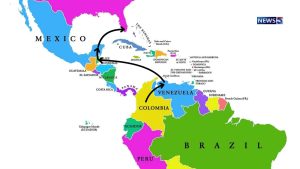 Paul Lopez, Reporting
Paul Lopez, Reporting
Here’s a staggering number for you; last year alone, the U.S. Coast Guard seized over $1.4 billion worth of illegal narcotics headed for American shores. How do these drugs get there? Traffickers start in South America, then move through secondary routes, places like Belize, before making their way north. So, it’s no shock that the U.S. State Department recently put Belize on its list of major drug transit and illicit drug-producing countries. Washington is pouring serious resources into this fight against transnational organized crime and Belize is part of that story.
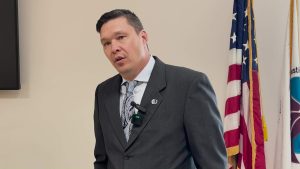
Allen Catterton
Allen Catterton, Laboratory Director, DEA Southeast Laboratory
“Our role at the laboratory is to primarily do evidence analysis. So, evidence that comes in through investigations or seizures is brought into the laboratory and we have a great team of chemists who identify the components inside the samples.”
Drugs that are seized often find their way to a forensic laboratory for testing, like the Drug Enforcement Agency’s Southeast Laboratory in Florida. Cocaine remains the number one illicit drug that traffickers attempt to get into the United States.
 Allen Catterton
Allen Catterton
“The primary substance that we encounter here is cocaine and then methamphetamine. But the most dangerous, but the most dangerous drug we encounter here is fentanyl.”
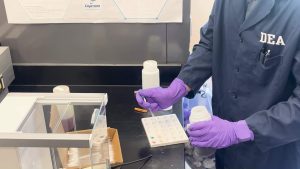 Over the years, the U.S. has seen an emergence in Fentanyl, a synthetic drug that flows in from Mexico. Dozens of citizens die from fentanyl overdose annually. Overdose cases may be dropping, but inside the lab, there’s a wall that tells a different story, a wall covered with faces of fentanyl victims. It’s a powerful reminder for the team here of why their work matters and what’s at stake every single day.
Over the years, the U.S. has seen an emergence in Fentanyl, a synthetic drug that flows in from Mexico. Dozens of citizens die from fentanyl overdose annually. Overdose cases may be dropping, but inside the lab, there’s a wall that tells a different story, a wall covered with faces of fentanyl victims. It’s a powerful reminder for the team here of why their work matters and what’s at stake every single day.
Allen Catterton
“From a national standpoint, we do about fifty to sixty thousand analysist throughout the country every year. Those ranging to smaller cases and large big cases. This laboratory does about eight to nine thousand cases a year and we break those down to multiple different tests.”
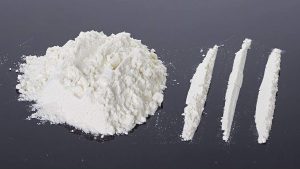 From the lab to one of the ports of entry, where traffickers will employ various methods to get illicit drugs into the U.S. Employees at the Port of Miami must always be on high alert. The “House of Pain” at the port is dedicated to inspection and detection.
From the lab to one of the ports of entry, where traffickers will employ various methods to get illicit drugs into the U.S. Employees at the Port of Miami must always be on high alert. The “House of Pain” at the port is dedicated to inspection and detection.
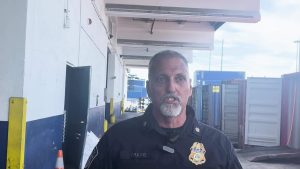
William Prado
William Prado, Supervisor, Contraband Enforcement Team
“We also have what is called CT Pact, which is our partnership between U.S. Customs and foreign business entities to make sure the supply chain is secure. So, every step from the supplier or the manufacturer to the moment something is put on a ship and sailed to the United States, we are ensuring that shipper is a good shipper.”
They call it the ‘House of Pain,’ and inside, there’s a wall that’s lined with the names of vessels once used to smuggle tons of illegal drugs. Each one represents a major bust, a symbol of the relentless war on the water. Notably, two vessels flying the Belizean flag are prominently placed on the wall. And, with thousands of containers passing through the port daily, and narco-traffickers employing multiple concealment tactics, port employees must be strategic.
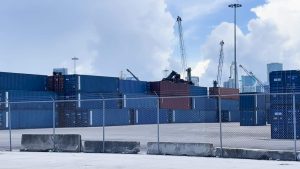 William Prado
William Prado
“You have to pick your biggest threat for the day and that is what you have to go for. That is the mindset we have to have here. What is my highest risk for today and that is what I am going to target.”
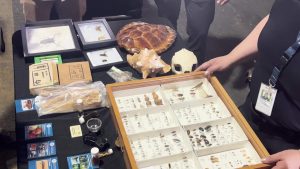 And, whatever illicit product passes the expert analysis of port employees, service dogs are sure to catch. The men and women of the United States Coast Guard add another layer of security and enforcement against illicit traffickers, utilizing commissioned vessels, also known as Cutters. These vessels patrol U.S. maritime space, as well as the high seas, across one point eight million square miles.
And, whatever illicit product passes the expert analysis of port employees, service dogs are sure to catch. The men and women of the United States Coast Guard add another layer of security and enforcement against illicit traffickers, utilizing commissioned vessels, also known as Cutters. These vessels patrol U.S. maritime space, as well as the high seas, across one point eight million square miles.
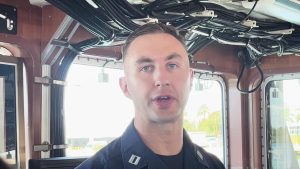
John Trautwein
Lieutenant John Trautwein, Deputy Chief of Staff, Operation Vigilant Sentry
“Every area has its own challenges and opportunities. But, like we said earlier, we are ready for whatever mission is asked of us, whether it is search and rescue, or whatever. Sometimes search and rescue, but we will respond to cases, but our primary focus is protecting the United States of America, protecting the homeland, protecting those who take to the sea.”
Outside of their own work to guard their borders, these U.S. agencies and departments also provide training support to countries across the Western Hemisphere to bolster security in partner countries. Reporting for News Five, I am Paul Lopez.






Facebook Comments